
If you were alive and coherent in the mid-90s, there’s no way that you could have escaped the phenomenon that was Pogs : simple, illustrated cardboard discs, about an inch and a quarter across. You stacked them, and then threw things at the stack with the goal of flipping some over. Re-stack and repeat. What began as a Hawaiian game using decorative bottlecaps became something that ferociously devoured all of North America.
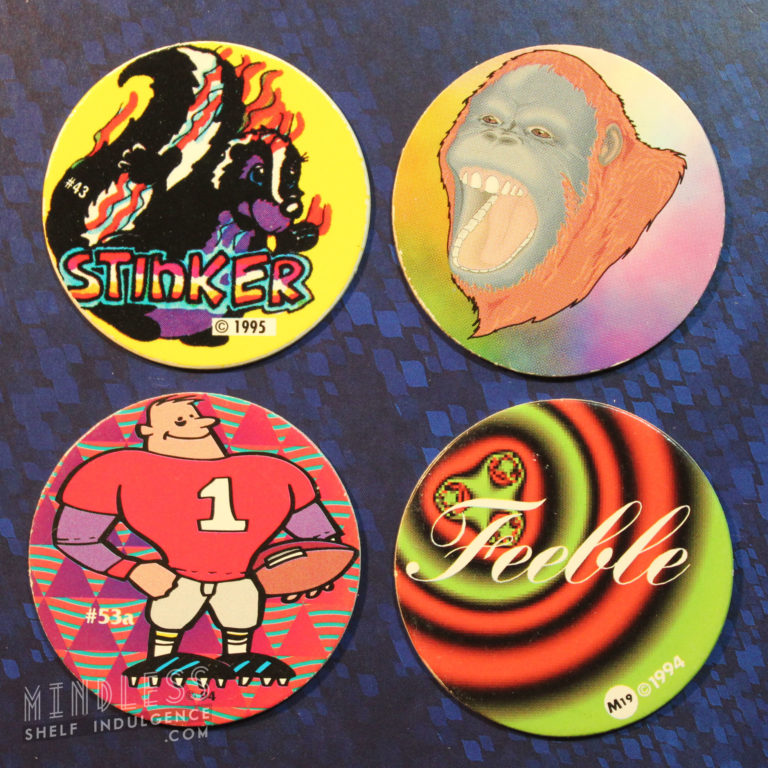
Pogs are a perfect cultural artifact that represents the exact middle of the decade, representing unregulated, inexpensive schoolyard madness, and everything both wonderful and terrible about the 1990s. Cheap to produce and often terribly designed by cheap labor in mental institutions (by appearances, at least), pogs were everything that ’90s consumerism was — not that there’s anything at all wrong with that. Almost every brand or property that existed in the ’90s had their own pogs: McDonalds, The Simpsons, Jim Lee’s X-Men, Goosebumps, Mighty Morphin’ Power Rangers, and every place down to your local bank, used car lot, and raw bar. Everybody made Pogs. They were given away in magazines, fishstick boxes, and at museums. You were nothing if you didn’t have a branded pog; a nobody who’d be forgotten at the stroke of midnight that transformed 1999 into the roaring 2000s.
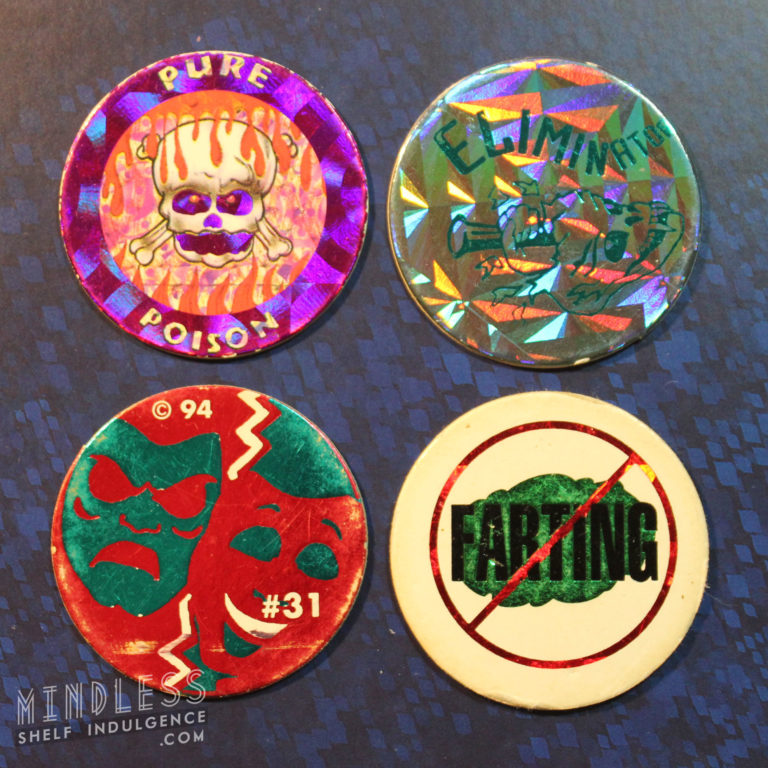
Because so many pogs happened so fast, without any real consideration for the effort going into them, pogs are usually awful, with a few notable exceptions. As a cultural artifact, every pog has a weird place as a snapshot of a very brief and very specific time : a forgotten TV show or business, a design aesthetic, or a cultural attitude of the era. As a collectible, they’re almost entirely without resale value. By the early 2000s, comic shops were dumping thousands of loose pogs into recycling bins, and cold, impoverished families who’d sunk their fortunes into investing in the promise of the pog were shoveling them into the furnaces to stay alive through the winter. Pogs quickly became a punchline for how fast they exploded and collapsed, and the regret we all collectively experienced by being drawn into their lure. What’s not to love about a distorted portrait of a skater punk saying ‘Did you smell that?’ or maybe a peace frog?
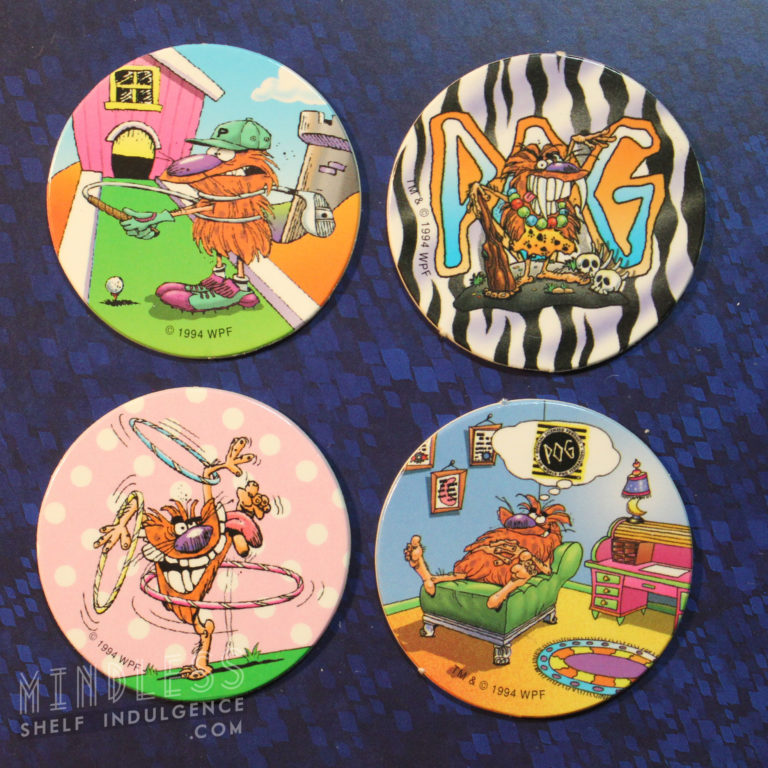
The official Pog brand, the only thing that can legally be called a Pog for copyright reasons, made a set of limited-color pogs which featured messages about how great pogs are, but they also had a Pog caveman mascot who appeared on further official pogs, often on co-branded cardboard discs with companies like Sunkist and Kool-Aid. The pog, in its truest form, is a well-made little object; expertly illustrated, designed for the small size and shape that it occupies. Other companies, like Slammer Whammers, also made some awesomely well-done pogs, featuring a great array of aliens and weirdos that fit into and leveraged the pog’s limited range. And then there were the rest.
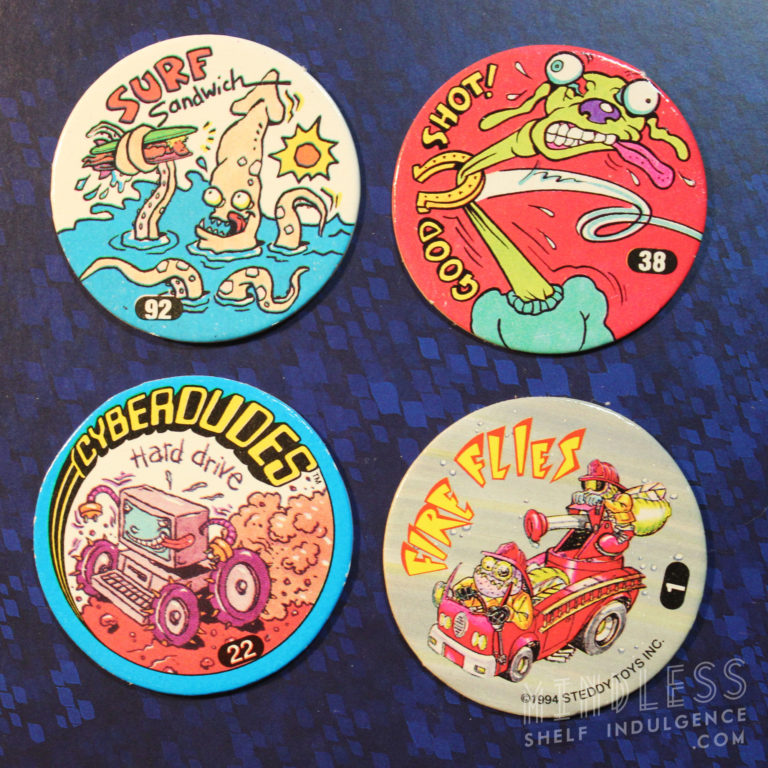
Blurry little pogs came with Playmates’ Star Trek action figures, except they were called Space Caps, not to be confused with a Star Trek : The Next Generation set that was released separately, called Stardiscs. DC Comics was Skycaps. There were Pahks, Krome Kaps, Pinnacle’s “Slug” caps, McFarlane’s “Spogz”, Stack ‘n’ Slam, Marvel’s Hero Caps, TNT ‘n’ The Kaps, and the list goes on. Rarely did a pog elevate the medium with something like a glow-in-the-dark overlay, or a lenticular lens. The terrible, uncredited drawings are legion. Pogs just wanted to exist; they forced themselves into the world through any available opening and it didn’t really matter how bad they were. They multiplied, completely unchecked, before the internet was really around to facilitate cataloguing and trading.
Pog slammers, the heavier plastic or metal discs used as projectiles, were totally unregulated. A slammer could be thin plastic, or a skull-crushing wedge of solid brass. They were treated like rare and precious objects; pogs were meant to be abused, but slammers were meant to cause abuse. And while slammers occupy a slightly different collectible space than pogs, most pog sets usually had a few slammers that would be slipped into blind packs. Some pog producers even made all-slammer sets just to fill the slammer-less void.
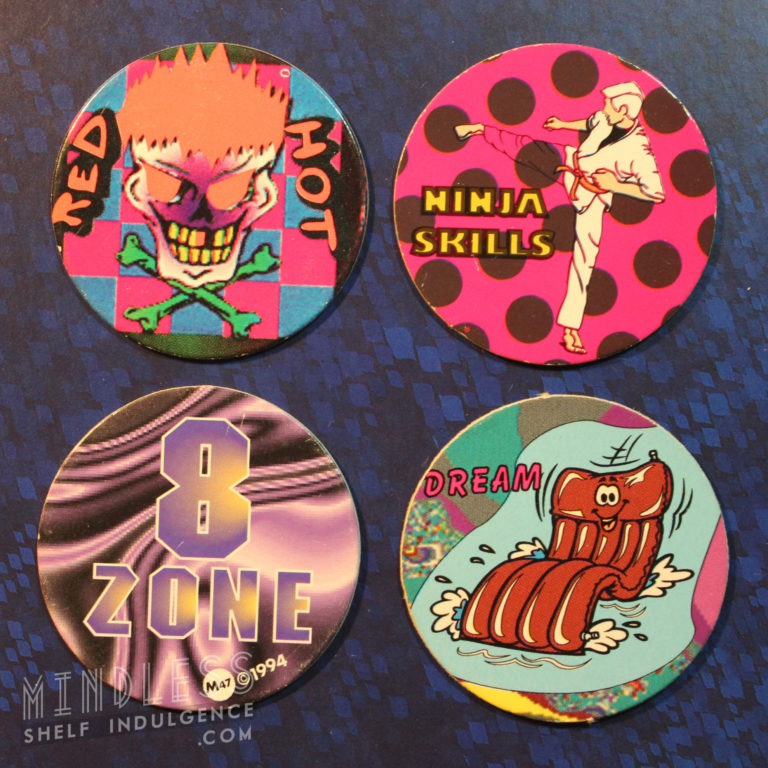
By the early 2000s, kids had already moved on to Silly Bandz, Mighty Beanz, Beyblades, and other things with terrible names. It was just too difficult to keep cheap cardboard relevant for too long, and the result today is thousands of boxes of unused pogs sleeping in closets.
And now, pogs are back as Retro Kaps, borne from a deep longing for the ’90s being experienced by an entire generation of disappointed adults. But there’s a disconnect; at this point in time, pogs don’t need to be fast and ugly. We have the time, talent, and technology to make really great designs and bring back the milkcap as it was always meant to be… except Retro Kaps don’t seem to understand what pogs were. The designs of Retro Kaps want to evoke the 90s, but they don’t make it all the way there. In that way, they’re representative of the kind of consumerism endemic to the 2010s: things don’t need to be good as long as they evoke a memory of a time that was good.
The problem with Retro Kaps is that it doesn’t have to be mutually exclusive. There can be retro things that also add to the “retro” experience in a positive way, rather than just filling a gap we forgot we had. Today’s pogs don’t need to accomplish anything, but there’s absolutely no reason why they shouldn’t.
In future posts, we’ll be talking about the best and worst that pogs had to offer, yesterday and today. Gird your pogtubes.
 C. David is a writer and artist living in the Hudson Valley, NY. He loves pinball, Wazmo Nariz, Rem Lezar, MODOK, pogs, Ultra Monsters, 80s horror, and is secretly very enthusiastic about everything else not listed here.
C. David is a writer and artist living in the Hudson Valley, NY. He loves pinball, Wazmo Nariz, Rem Lezar, MODOK, pogs, Ultra Monsters, 80s horror, and is secretly very enthusiastic about everything else not listed here.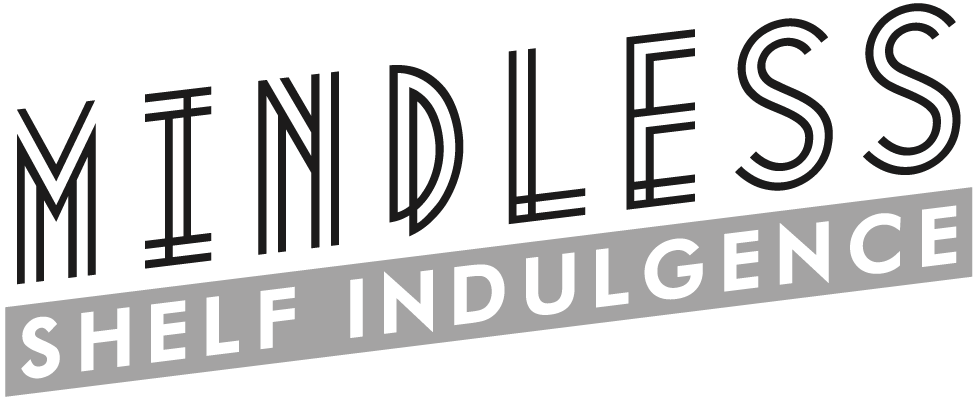
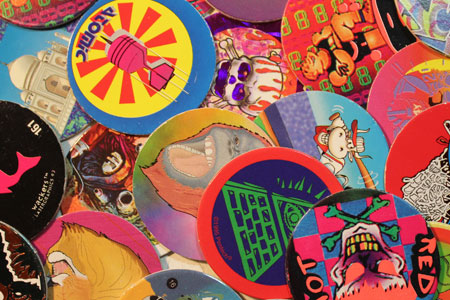
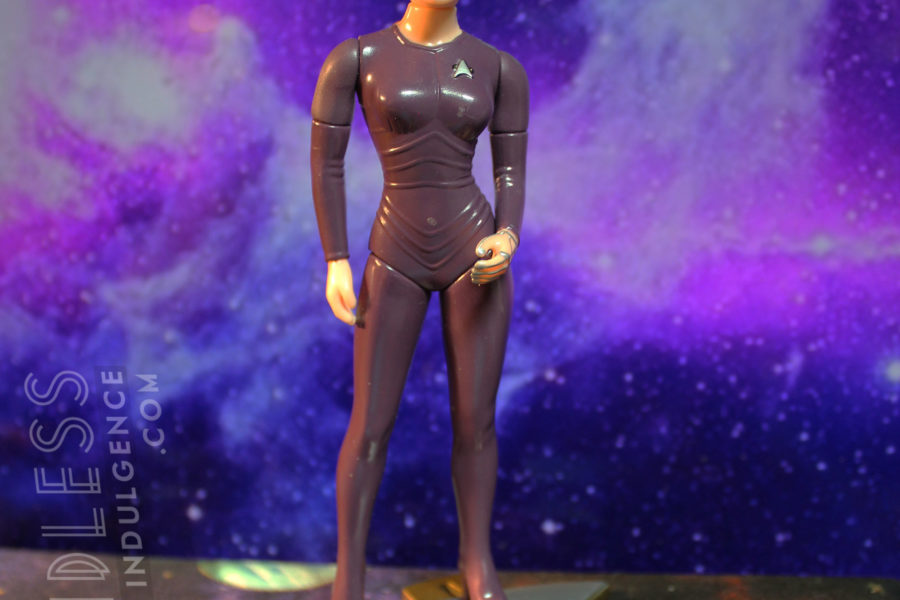
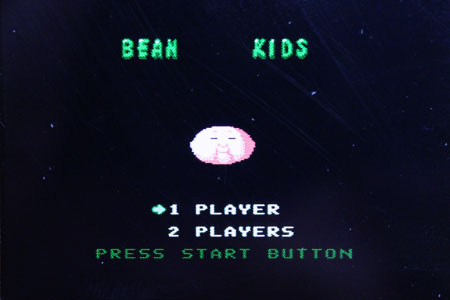
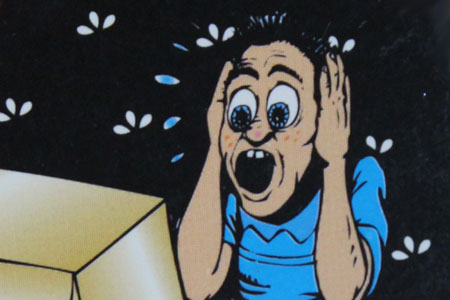
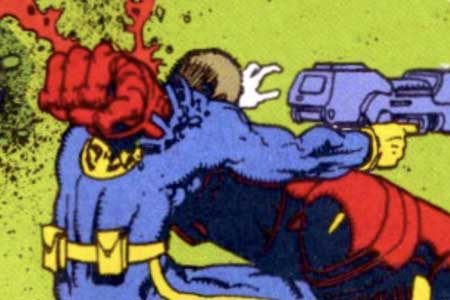
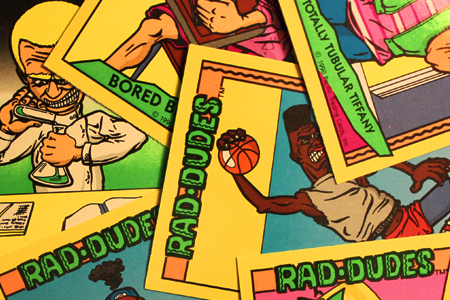

Comments are closed.